As you might know, I’ve been propagating a little jade baby from a cutting – and, this week, I finally got a rosette! This got me wondering – how the hell does a new baby succulent form from a leaf removed from the mother plant?
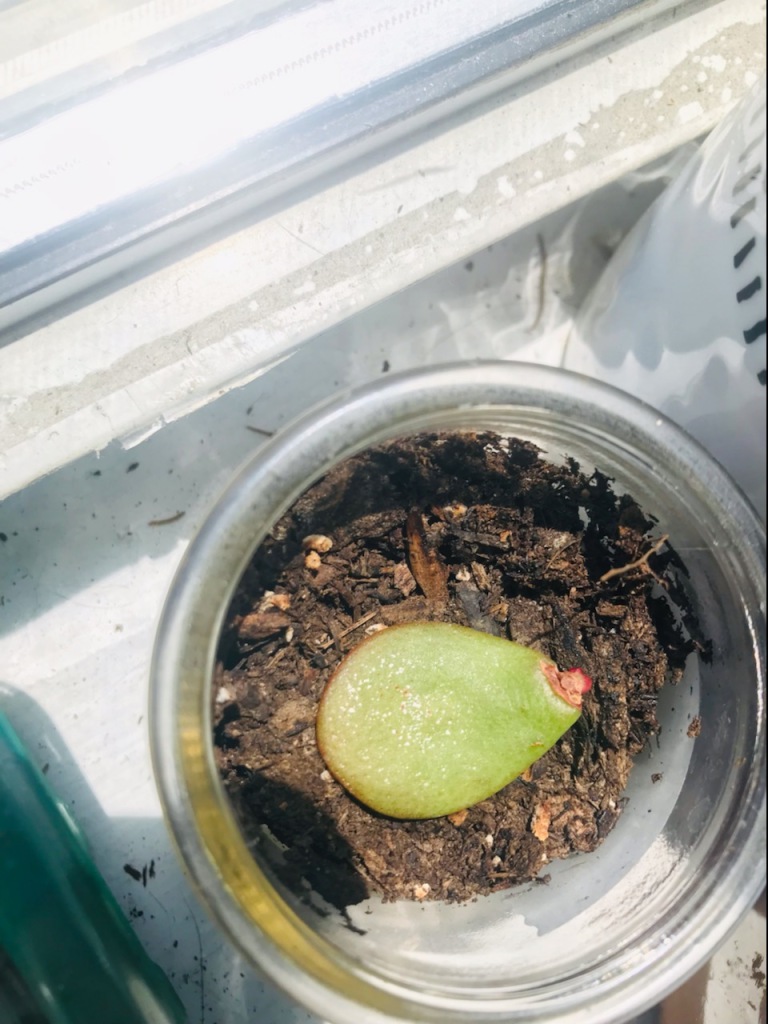
Isn’t that kind of wild?
I got my propagation advice from Succulents and Sunshine – the method they suggest absolutely worked for me. For my research into the biology behind succulent propagation, here’s the resources I found:
- Leaf & Clay
- House Plant Passion The Science Behind: Succulent Leaf Propagation
- Department of Biology, Carleton University publication by Root Gorelick (no joke) (I mean, I think that’s the author’s name?)
- Cacti/Desert Succulents
- Wikipedia: CAM Photosynthesis
- Lumen: Plant Development
And, before we dive deeper, here are some new fun botanical words I learned:
- parenchyma*: the cellular tissue, typically soft and succulent, found chiefly in the softer parts of leaves, pulp of fruits, bark and pith of stems, etc.; more generally, functional tissue that is not supporting or connective tissue.
- meristem: a region of plant tissue, found chiefly at the growing tips of roots and shoots and in the cambium, consisting of actively dividing cells forming new tissue (think: like stem cells)
- cambium: layer of actively dividing cells between xylem (wood) and phloem (bast) tissues that is responsible for the secondary growth of stems and roots (secondary growth occurs after the first season and results in increase in thickness)
- adventitious roots: a root arising from any other place on the plant other than the radicle or the root axis
- radicle: primary root; the first part to appear after a seed germinates
- areole: a round or elongated often raised or depressed area on a cactus which is equivalent to a bud and from which spines, flowers, stems, or roots grow (this word was just so similar to areola, I had to know what it meant – you can see why the two words are similar!)
- ontogeny: the development or course of development especially of an individual organism (as in, “leaves are generally considered the end of the ontogenetic line” of plants, adapted from the Root Gorelick piece)
- parenchyma*, sclerenchyma, and collenchyma: three different types of plant cells, differentiated from one another by the width of their cell walls
- petiole: the stalk that joins a leaf to the stem
- phloem: the vascular tissue in plants that conducts sugars and other metabolic products downward from the leaves
- abscission zone: the only way I can describe this easily is with an image – SEE BELOW:
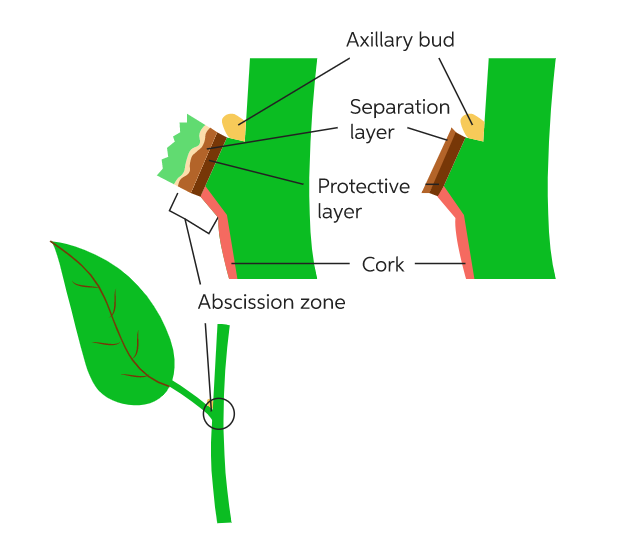
The Gist
Leaves best grow new root and shoot meristems when they have lots of parenchyma, store lots of water, and have low surface-to-volume ratios.
Root Gorelick piece, Concluding Remarks
So how come succulent plants can form plantlets from leaf cuttings? I’m not going to say “because it’s evolutionarily advantageous,” because, well, that isn’t actually an explanation as to why it’s possible.
Instead, let’s focus on what makes succulents special. Basically, the properties of their leaves, their genetics, succulent-specific photosynthesis, and naturally-selected chemical signaling allow roots to sprout from calloused-over petioles in some succulent plants.
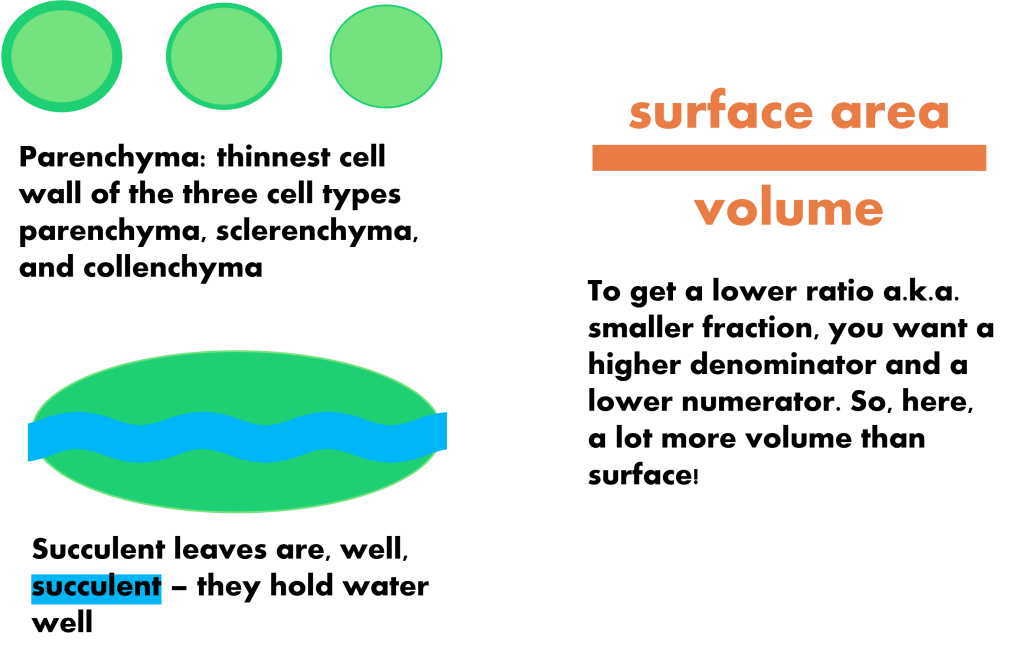
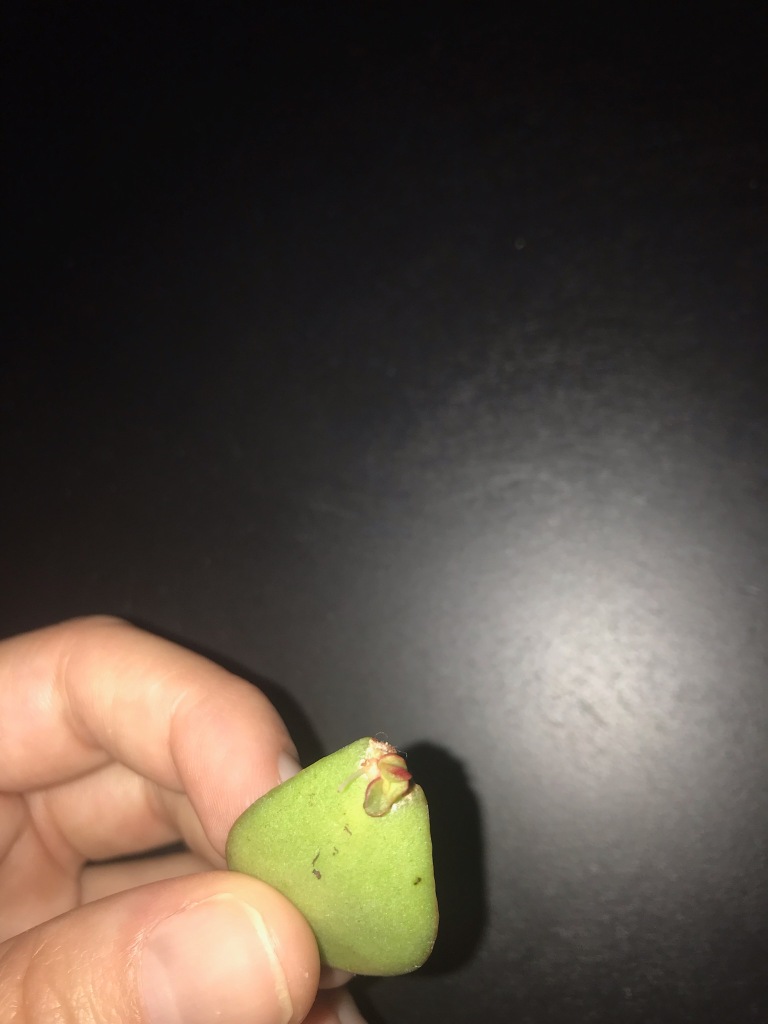

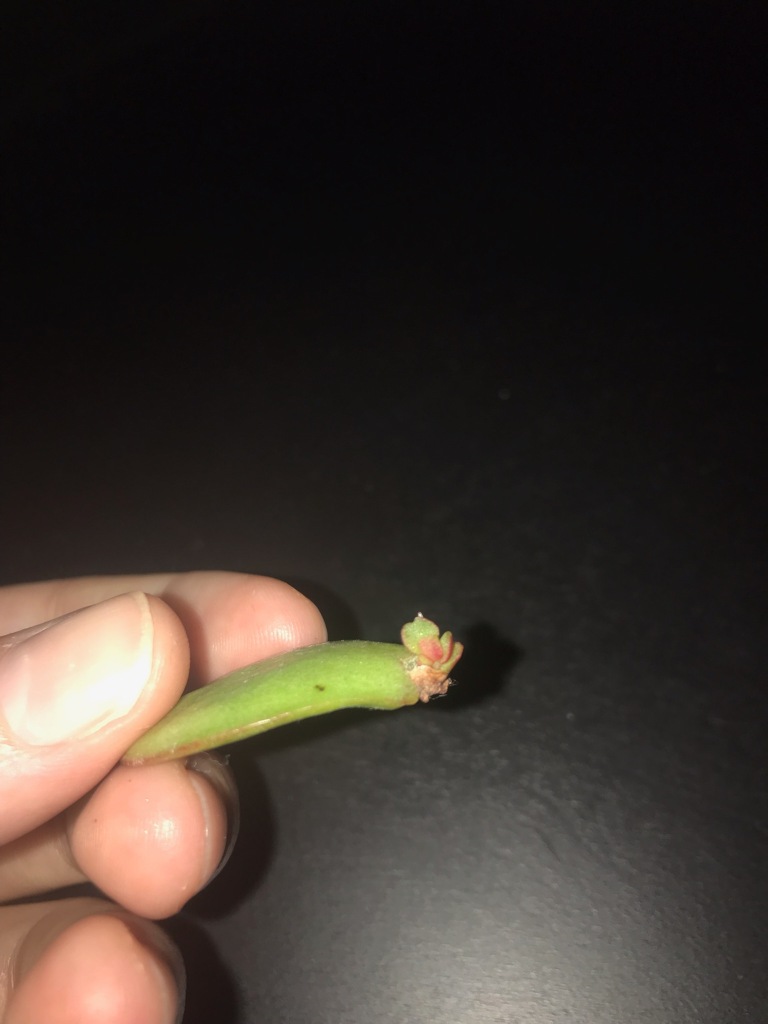
Succulent Leaf Properties and Succulent-Specific Photosynthesis
Succulent leaves are succulent – they hold water well and so they are able to share that water with new plantlets. What else is in a leaf? Plants photosynthesize, making food for themselves in their leaves. Succulents, specifically, use CAM photosynthesis, with CAM standing for crassulacean acid metabolism.
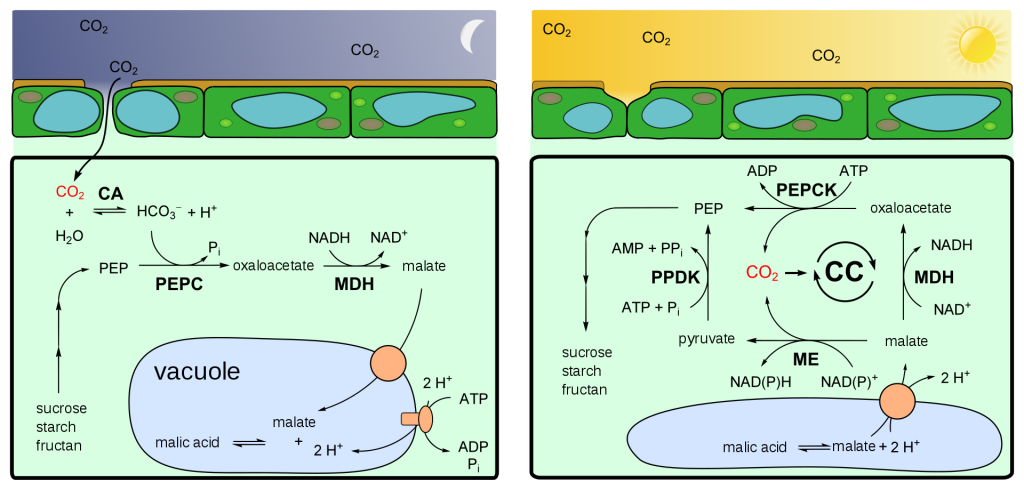
This brand of photosynthesis allows plants that live in hot, dry climates to lose less water. Because of this extra boost of water rationing, succulent leaves are especially good at providing water (and other nutrients) to the baby plantlets that grow when those leave are severed from the mother plant.
So the leaves or succulents are full of baby plant nutrients, keeping little rosettes alive long enough to root – but how are baby plants able to sprout out of a leaf in the first place? Read on!

Genetics and Chemical Signaling
There’s one word you need to remember here: meristem, meristem meristem! As mentioned above, that’s the stem-cell-like part of a plant from which new cells come.
Imagine if you just had stem cells ready to go in your feet, and one day your foot got severed and a new humanoid started growing out of your foot-stump. Wouldn’t happen, right? For most plants, it wouldn’t happen either – the leaves of most plants are “terminal” – as in, nothing new or different is going to grow out of their tissue. That is not so for succulents like jade or echeveria; in these plants, there remain undifferentiated cells ready to take on the world!
Meristematic tissues are found in many locations, including near the tips of roots and stems (apical meristems), in the buds and nodes of stems, in the cambium between the xylem and phloem in dicotyledonous trees and shrubs, under the epidermis of dicotyledonous trees and shrubs (cork cambium), and in the pericycle of roots, producing branch roots.
Lumen Learning Plant Development
So once a leaf is severed, chemicals tell the end of the leaf that was once attached to the larger plant to scab over, or callus. Without a callus, it seems, plantlets can’t grow; once the callus forms, “new root and shoot apical meristems” (Root Gorelick piece, page 55 of the .pdf) can form and a new plant can be born!
Interestingly, there doesn’t seem to be much literature on the subject of succulent propagation – at least, not on the why. But there is lots of information on plants that are good to propagate from cuttings and how to do so, including the table below! I encourage you, if you’re able and interested (and aware that certain plants are illegal to propagate!), to get out there and propagate – and maybe study your little rosettes through a microscope, too! Hopefully I’ll have one of those soon.

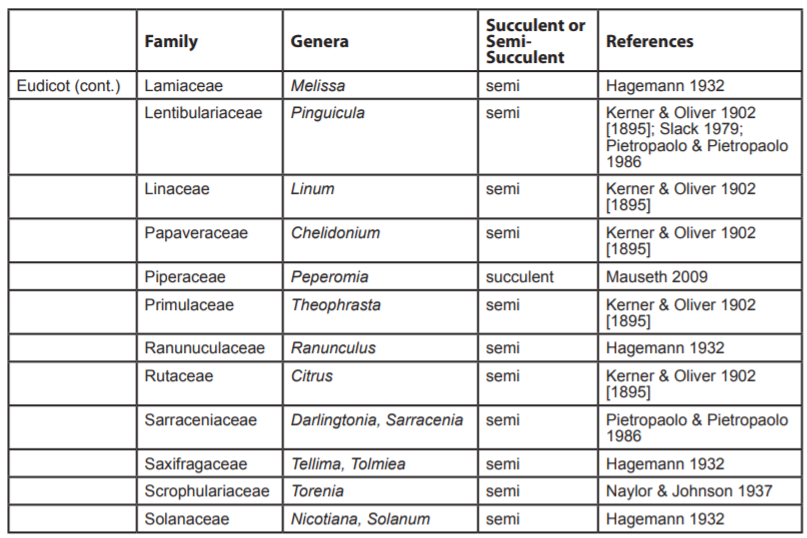
☻☀✿